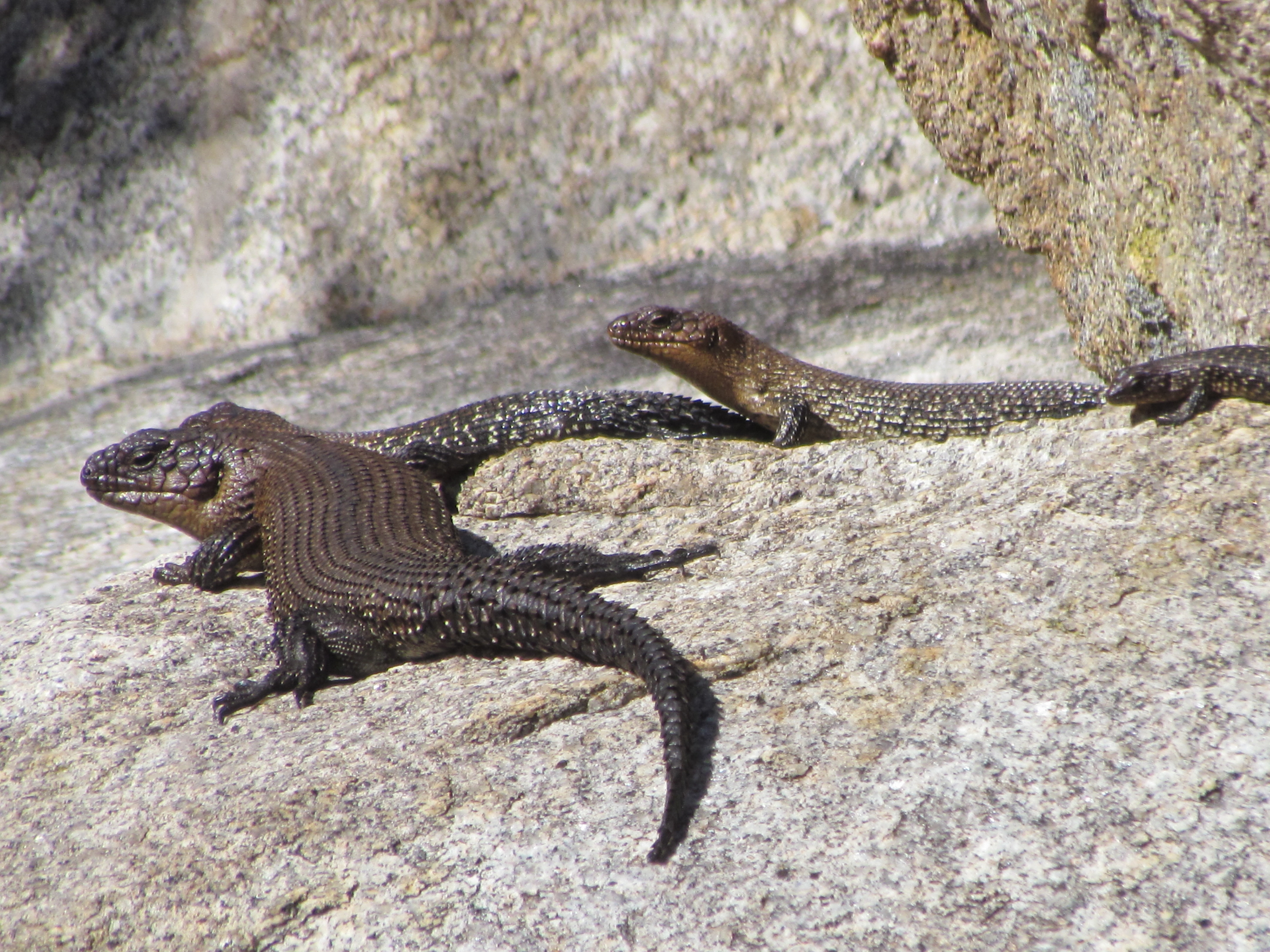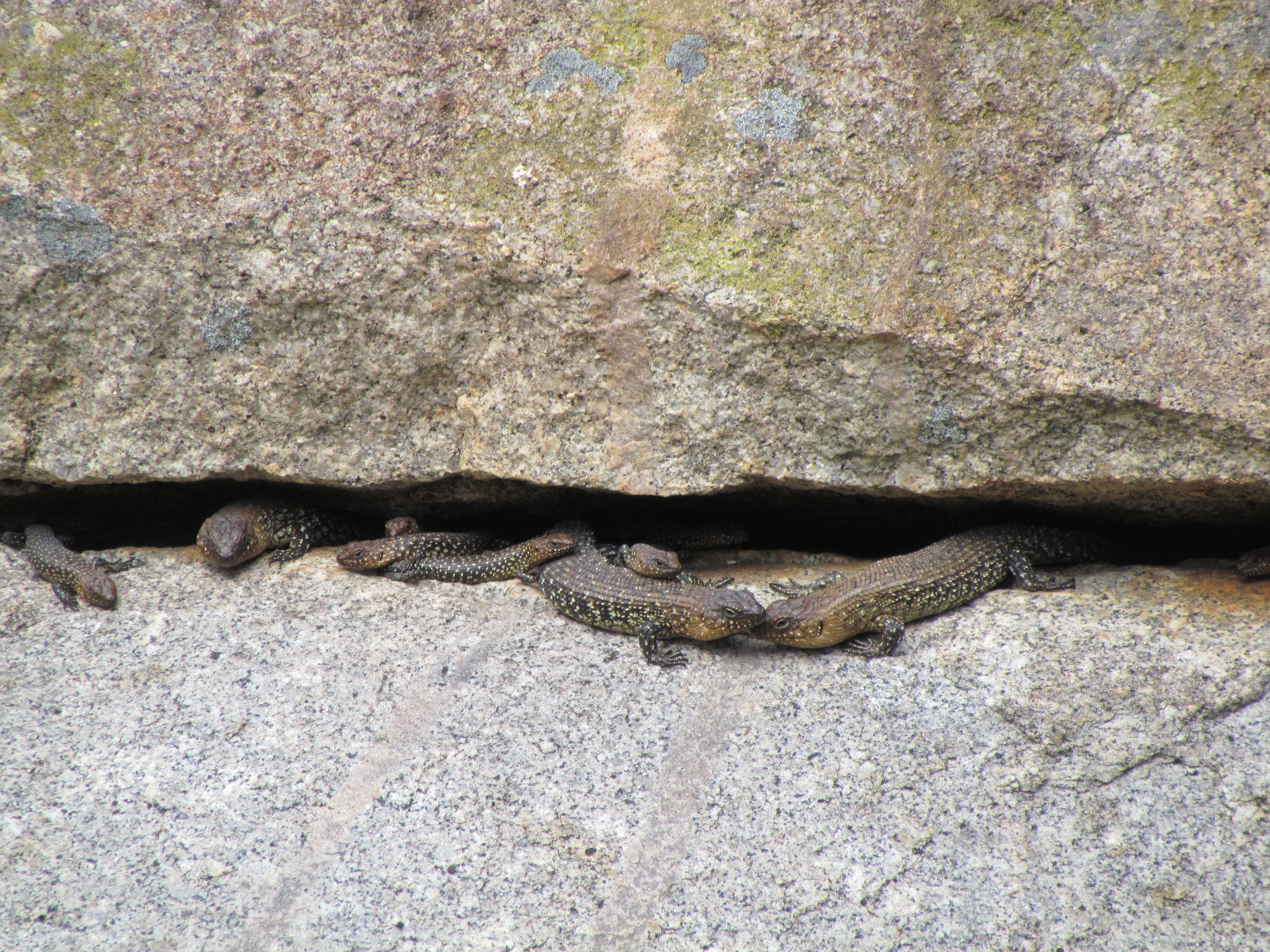For the December Nature News, Tanya Loos from Connecting Country writes about the sociable skinks photographed by Nick Schulz on his property in Nuggetty.
Earlier this year, landholder Nick Schulz sent us a series of stunning photographs from a rocky granite outcrop on his property in Nuggetty. The pictures show a large group of plump, spiny and spotted skinks seemingly enjoying each other’s company near the safety of deep rock crevices. They are Cunningham’s skinks and they turn the idea of reptiles being cold loners on its head!
The skinks live in long term family groupings, with a large sized breeding pair and many immature siblings of various ages and sizes from previous years. This kind of social system is more commonly seen in birds and mammals. Researchers suggest that the family group represents safety in numbers, with more eyes to look out for predators such as birds of prey. Another advantage may be temperature-related as the skinks huddle together on cold days and nights.

A skink family by Nick Schulz
The breeding pair remains faithful to one another from season to season and also over many years – similar to the Stumpy-tail lizard or Shingleback who also has long monogamous relationships. Both the Stumpy-tail lizard and the Cunningham’s skink give birth to live young instead of laying eggs .
Cunningham’s skinks are only found around rocky outcrops – each family group must have a rocky habitat with nice deep crevices to hide in. If threatened by predators, the whole group scuttles into the cracks to hide. If the bird of prey or fox is persistent and tries to remove a skink from a crevice, they will inflate their bodies and make their spines stick out, thus becoming incredibly hard to dislodge from cracks.
Like other large skink species such as Stumpy-tails and Blue-tongue lizards, Cunningham’s skinks are omnivorous, with a large part of their diet made up of plant matter such as flowers, fruits, soft leaves and shoots. They also eat insects, spiders and small lizards.
We have had reports of this species in Sutton Grange, and Elphinstone and now Nuggetty – if you have granite outcrops on your property, you may be hosting a whole family!
Addendum: This article was written for readers of the Midland Express. I have photographed one Cunningham’s skink in Hepburn Regional Park, near Tipperary Springs. I would be very interested to hear about any Wombat Forest sightings. Email me at [email protected] 🙂

Near the safety of a large crack… by Nick Schulz
Have always been very keen on lizards. My grandparents, my parents & I all put out apple peelings and other delights if we had a resident stumpy lizard or two. My father had a long running battle with one stump, who was very partial to tomatoes.. Not all were eaten, but were covered in stump slobber, which was a game winner for the stump.
My kids also took delight in the bluetongues who occasionally bustled around our place. They lived in the scrub across the road from our house.
Our favourites were the bearded dragons who always had inflated opinions about how tough they were and had to be shooed off the road to avoid being skittled.
Thank you for sharing your lovely luzard tales! Sorry i didnt see the comment you had made jane! Xx